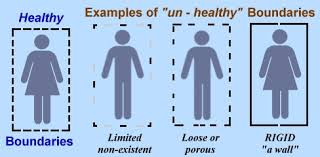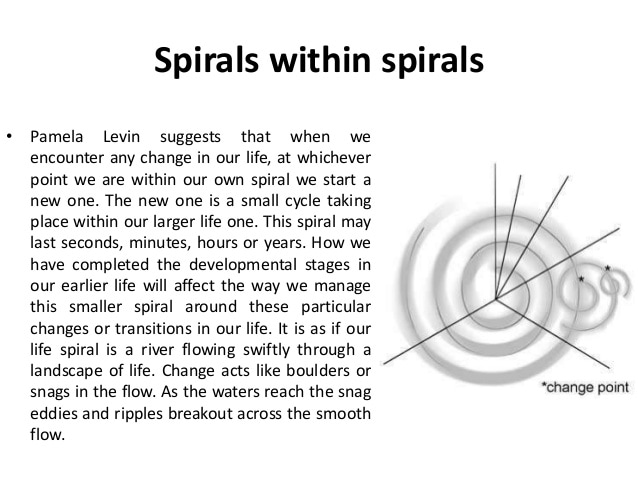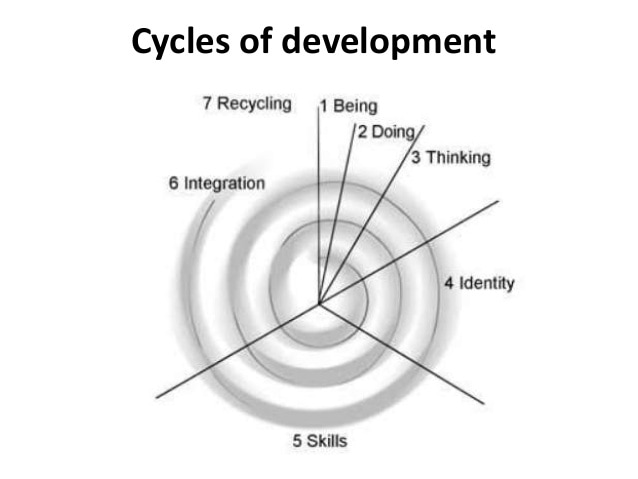DripplesDripples (drops n' ripples) attempts to invite a relook at our current definitions, at what we know and don't know, of our selves, at health and of life itself, and perhaps have a perspective that is new.
|
 Where do I end and another begin? This is a question that came about for me as we were exploring boundaries in our training as fellow-therapists training to upgrade our own competencies. Each of us fellow-humans are explorers. What we explore depends on what we have as a 'flash-in-the-pan' moment in our cognition that piques us enough to go exploring further in our curiosity. Well, the above question has had me come home to what has me exist, or rather how do I know I exist? How do I know what I feel like without having to touch me? What I see is different from what another sees, so is there a boundary between what I see and another sees? What does it mean to see things through another's eyes? How do I know that it is 'anothers' eye that I see through? Similarly, how do I know which is something that I feel and which I know is actually another's feeling that I am picking up on with my sensory perceptibility. How do I know which is my thought and which another's? How do I know that I am not rote'ing anothers thought? How do I know what is original without having to verify with anything? How do I know which is mine and which is another's? Just as a material object is recognized (re-cognized) and thus I-dentified with my-ness (as in dent the object with my-ness so that that object becomes 'I'dentified!, Identity is basically values/traits/qualities/words that I stamp/dent with my-ness so that becomes my I-dentity!) do I know which is my feeling and which I empath of another? It is an ongoing inquiry, of course, but I sometimes have a sense of when I am encroached (as in encroachment of personal property) and that has me understand what does violating personal rights mean and know what is person-al and therefore where do I end and another begin.
0 Comments
Seek before you speak.
Words gain meaning in accordance with context. If the meaning as intended by the speaker/writer is not grasped first and if quickly concluded the meaning before understanding the context, lesser and lesser understood is the message in what is spoken/written. Sometimes grasping the context leads to understanding the thread of thought. Yet, it is the words that give the specifics. It is a bit like zooming into the geography of a place using Google satellite view where you get the location of a house (context) but the brass doorknocker and particulars of the person opening the door are specifics not immediately available, and specifics give details that change a lot the meaning and message conveyed. (Maybe that person opening the door was a terrorist that was being attempted to be watched via the satellite. Did the story of the whole zooming-in change now? It is probably the nuances and details around the specific words that is not immediately available in just the over-view/context that changed the story). Under-standing the context and the nuances in the meaning of the word(s) is required before the word or context opens up the world that each come from. Under-standing (as in standing under) a word or context is much like standing in front of a door waiting for it to open. The door may lead to a tiny little room or a full garden/forest or it may be the rabbit hole that led Alice to Wonderland too easy to miss by over-standing (as in standing over) a word or context. The word could be something as dangerous as a little bomb or just a lump of clay but you miss the point by underestimating it, by over-standing it. Meaning, underestimating (over-standing) what a word or context may be would lead to completely missing the point or losing out on a jolly good Alice in Wonderland world of discoveries, or the next big thing on the planet should you have paid attention to that word or context that would trigger that idea in your head that would change everything :). Afterall, where else do we understand something than in our own heads of something that is happening outside our heads. Under-standing is a bit like meditating on the word/idea/concept - a bit like placing that word or idea or context on an imaginary table in our mind and sitting in front of it curiously waiting for it to speak or do something, maybe even regard you back, and tell you in some way about itself. It is much like meeting a new person, ay? We are likely to take a second look at a 'stranger' (as in 'strange' or different-from-what-I-am-used-to-seeing person) but not someone who looks just like oh-so-many-people-seen with maybe very little brush-aside'able difference, unless of course the person shows or does something unexpected! What if the person doesn't do something unexpected. Does that mean the person is not different just because we can't see the difference? Presuming the meaning of that oh!-so-familiar word has us lose out on the world that that word comes from uttered/written by that person. Under-stand before over-stand. The word or context then becomes a step on which to step and get to the next step on your journey. (Hey! I am learning too, so don't judge me if you find me on the road happily over-standing. These words are soo much Alice-in-Wonderland rabbit holes - too easy to miss thinking it is just another word! They say 'you teach/preach what you most want to learn' and this is one of the things I am working on - under-standing - and I am somewhere between the thinking and habiting stage of the, you know, "watch your thoughts they become words, watch your words they become actions, watch your actions they become habits, watch your habits they become character, watch your character it becomes destiny" saying of some wise folks. So, here I am wording my thinking as I learn to action and habit it. Happy learning, fellow-traveller! (You know, "life is like a train journey and we are all fellow-travellers" bit? :) There is a lil one inside of us, actually several lil ones if a person is constantly engaged in doing unfamiliar or new activities - a new lil one is born in our psyche in the process of doing the new activity who finds ways to maneuver through the new activity/inquiry, and each of these new ones, just like children we see around us, grow in their own time depending on how much the activity has been continued to be engaged in and the child grows up to be a fully grown adult adept at that activity. That is how we unconsciously become more skilled if we continuously spend time engaged in an activity of interest, and over time our 'expertise' in these activities join up with our existing expertise and form interesting combinations of skills hitherto far unthinkable, and that is how we become cameleonic (who says that is only a bad trait?!) and able to adapt with changing challenges - the ability, of course, depending on what you have spent time in developing routinely. Inner child?! How do we know there is an 'inner child' within? Butterflies in the stomach, anxiety of any kind that is either always there or comes about at different points of time during the day or at specific instances of experience through life, overwhelm of any kind about anything, 'I don't know what to do' panic, pure innocent glee about anything, 'I feel like I want a cuddle,' 'I wish I had someone to rely on or hold onto,' curiosity (that is a pure lil one trait; people die or get old if curiosity is not a part of their constitution!) - if you have any of these above symptoms, you have a lil one inside you that definitely needs and deserves to be taken care of. Actually, you should be concerned if you don't have one or more of these symptoms because these symptoms are a great sign that you are alive and are playing the game of life. If you don't have any of these above-said symptoms, you should definitely do an unfamiliar activity or take up an activity that you have never done before (updated on 3-June-17: Maybe learn a new language or learn a musical instrument or try growing a plant in a pot or learn to cook or try rock-climbing!), and you can be sure to get back into the zone of living (as against merely surviving) with at least some of the zing/excitement of living back, and the zeal of living is soon on its heel (I bet on this)...and what's more, your side of the lawn would get greener again (I bet on this one too!). The idea is not mine originally. It is the idea of Pamela Levin who takes special interest in Transactional Analysis and published the idea of Cycles of Development. The following images are excerpts from her work as interpreted by other psychotherapists. So, how do we take care of these lil ones within us? Just like any baby would be. They love mushy food, fine gooey textured, not too spicey. It could be a nice smoothie or plain pongal or khichdi or curd rice or that bucket of icecream when things get a little too much to handle (this one is a popular with homemakers or had-it-up-to-the-neck mothers, but you need to make sure you have a wide selection of comfort-foods and not just icecream or we are talking about putting on weight, and putting on weight is a popular stressor, so make sure icecream is NOT your only comfort-food), or maybe dal with rice and curd nicely mashed (that's MY comfort food). Oh! Your favourite comfort-food is most likely to be inner-baby comforting food, because what gets comforted is that aspect of us that has us feel anxious and clamped up when faced with unknowns and daunting whatevers out there in the world. You could do one or all of the following: 1. Mushy, gooey food. Smoothies, curd rice, pongal, khichdi, dal curry and rice with curd, icecream, porridge, any of your favorite comfort-foods; just make sure you have more than one comfort-food to fall back on when the going gets a bit choppy. Better still, include one of the inner-child care food as part of your daily eating habit so you are taking care of your inner-child every day. You are bound to be surprised at how much the quality of your life would enhance. 2. Placing one palm of either hand on the navel (yes, your belly button) like you would place a hand on your pet puppy and feel it breathing, i.e. place a palm gently, kindly, mindfully on your belly button and feel the warmth of your abdomen as you breathe; this helps a lot in calming the anxious/flustered/overwhelmed feeling. A lott of the times, it also helps regulate constipation and/or loose motion (try it!). 3. A nice warm oil massage. Ayurveda recommends the practice of Abhyangam, which is self-oil massage with sesame oil followed by warm water bath (don't require soap after) with all joints and crevices nicely massaged. Try it. Your skin is most likely to feel plump and well taken care of and your emotional state a kinda fullness that can be akin to 'rich' and comfortable. The term 'comfortable in your skin' has a literal meaning with this practice. I suspect the phrase 'elbow grease' (as in, work that pays for elbow grease) must have some origin in a practice such as a massage. That's it for now. Will add to this post as new inspiration floods in richer content. Until then, take care of your inner-child. I dare say, that is quite enough to suffice having taken care of yourself for our inner-child (or children) are our most vulnerable parts of us that we don't dare reveal to another and perhaps the only parts of us that actually gets hurt or saddened or happy. Our inner-child is very close to our true selves - the part that we won't easily expose to another but which needs our greatest care for it is our selves; it is our self, or at least leads us to our Self. |
AuthorMy name is Bitha Sadanandan. I am a person behind MITI World but this blog is my 'look what I found' pin-up kind of wall developed for a purpose mentioned in the Blog Header. Some things just need to be said, even if an idea only you are crazy enough to have! {Volcanoes are the reason why I voice my thoughts here; a healthy steam-engine keeps the environment life-sustainable.} Categories
All
Archives
June 2030
|

 RSS Feed
RSS Feed

